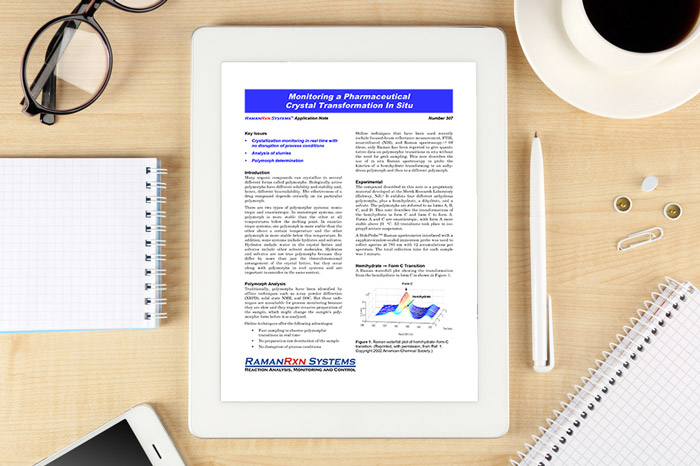Whitepaper: Monitoring a pharmaceutical crystal transformation in situ
Posted: 1 March 2016 | Kaiser Optical Systems | No comments yet
Many organic compounds can crystallize in several different forms called polymorphs. Biologically active polymorphs have different solubility and stability and, hence, different bioavailability. The effectiveness of a drug compound depends critically on its particular polymorph.
There are two types of polymorphic systems: monotropic and enantiotropic. In monotropic systems, one polymorph is more stable than the other at all temperatures below the melting point. In enantiotropic systems, one polymorph is more stable than the other above a certain temperature and the other polymorph is more stable below this temperature. In addition, some systems include hydrates and solvates. Hydrates include water in the crystal lattice and solvates include other solvent molecules. Hydrates and solvates are not true polymorphs because they differ by more than just the three-dimensional arrangement of the crystal lattice, but they occur along with polymorphs in real systems and are important to consider in the same context.
This whitepaper is restricted - login or subscribe free to access


Why subscribe? Join our growing community of thousands of industry professionals and gain access to:
- bi-monthly issues in print and/or digital format
- case studies, whitepapers, webinars and industry-leading content
- breaking news and features
- our extensive online archive of thousands of articles and years of past issues
- ...And it's all free!
Click here to Subscribe today Login here
Related content from this organisation
- Expert View: Beyond API monitoring: in‑line Raman spectroscopy for bioprocess monitoring and control
- Application Note: Representative sampling of solids and turbid media in process raman spectroscopy
- Scientific Poster & Whitepaper Gallery 2018
- Scientific Poster: Raman spectroscopy technologies enabling scalable process control in bioprocessing
- Kaiser Optical Systems, Inc. receives 2017 Aspen Award for the advancement of upstream bioprocessing






